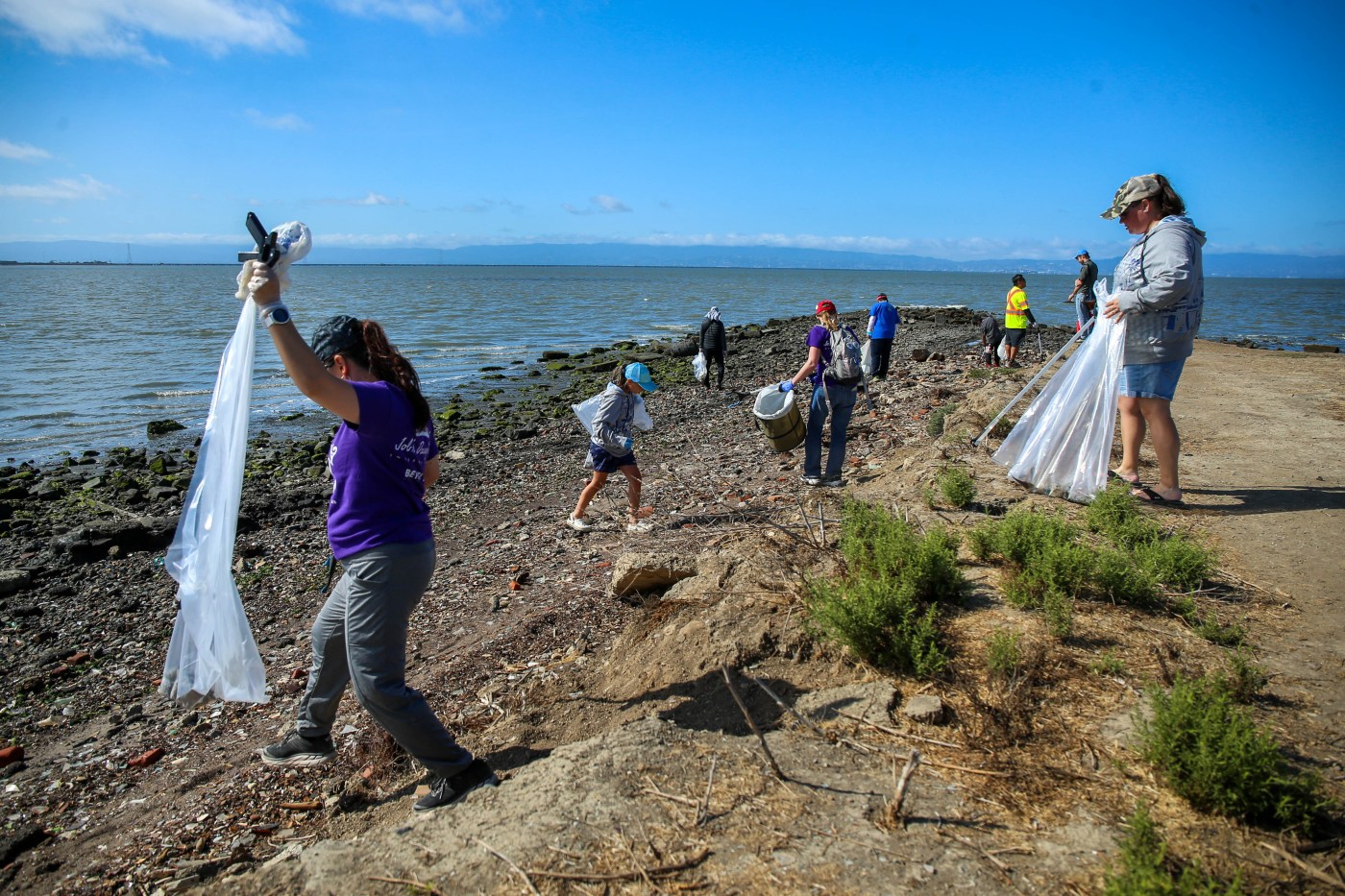Every September, evening temperatures begin to chill, high school football games kick off, pumpkins sprout in farm fields and tens of thousands of people flock to California’s beaches, lakes, rivers and streams to pick up litter as part of the state’s largest annual volunteer event, California Coastal Cleanup Day.
The goal is to beautify the environment and reduce trash, which can harm fish, birds, sea lions, dolphins and other wildlife. This year’s cleanup day, the 40th anniversary, will take place from 9 a.m. to noon on Saturday. Volunteers are still needed at most of the 761 cleanup sites around Bay Area and the state.
To participate, go to coastalcleanupday.org
Since 1985, 1.7 million volunteers have picked up more than 26 million pounds of litter. Here are the top 10 most commonly found items from 1988 to 2023, by number and percent of overall items collected:
1. Cigarettes/Cigarette Filters — 8,403,338 (35.34%)
2. Food Wrappers/Containers — 2,592,161 (10.90%)
3. Caps/Lids — 2,207,929 (9.28%)
4. Bags (paper and plastic) — 1,723,026 (7.25%)
5. Cups/Plates/Forks, Knives, Spoons — 1,268,781 (5.34%)
6. Straws/Stirrers — 961,822 (4.04%)
7. Beverage Bottles (Glass) — 749,812 (3.15%)
8. Beverage Bottles (Plastic) — 659,505 (2.77%)
9. Beverage Cans — 573,772 (2.41%)
10. Construction Material — 407,651 (1.71%)
Top 10 total: 19,547,797 (82.20%)
There will be cleanup events Saturday in 57 of California’s 58 counties, with only Trinity County, near the Oregon border, so far not participating. Major agencies, like the East Bay Regional Park District and the Santa Clara Valley Water District are cleaning up multiple sites.
Volunteers can show up at nearly all the sites, including popular beaches on the coast, San Francisco Bay, and inland lakes and streams. In many cases, they need only bring gloves.
“This is a three-hour event that happens once a year, but it has ripples through society,” said Eben Schwartz, marine debris program manager at the California Coastal Commission, which oversees the event.
“Everything in California flows downhill to the coast,” he said. “If we can try to stop trash where it starts before the rains come we have a chance to protect a whole lot of wildlife that could otherwise be harmed by all that trash washing out to the coast.”
In general, California’s beaches and waterways have gotten cleaner over the past 40 years.
Twenty years ago, in 2004, volunteers picked up an average of 18 pounds of litter per person. Last year it was 8.2 pounds.
Recent changes in California laws have affected the type of litter found on beaches.
Five years ago, Gov. Gavin Newsom signed a law banning smoking on state beaches and state parks, with a fine of up to $25 per violation. Cigarette butts, nearly always the top item found each year by volume, declined to 21% of the total litter last year, down from an average of about 35% to 40% in the years before that.
Plastic bags have shown a similar drop since former Gov. Jerry Brown in 2014 signed a law banning plastic grocery bags in an attempt to reduce litter and ocean pollution. Voters upheld the law in a state ballot measure, rejecting a challenge from the plastic bag industry.
In 2009, plastic grocery bags made up 8.7% of the pieces of litter found in California during coastal cleanup days. Last year, they totaled just 1.3%.
The event is still bouncing back from the COVID pandemic. In 2019, the year before COVID hit, 74,410 people volunteered. During COVID in 2020, only 19,730 people did, without organized group events. That number jumped to 36,289 in 2021, then grew again to 39,318 in 2022, and again to 45,762 last year.
Schwartz said he expects 50,000 or more will join this Saturday. Smaller, local cleanups sponsored by other groups throughout the year also are helping reduce litter at beaches, lakes, rivers and streams, he said.
Funny items turn up every year.
“There’s always somebody finding a wedding dress, or other weird things,” he said. “Last year in San Diego somebody found one of those strips of photos you get from a photo booth and the guy’s face had been blacked out by a sharpie. In Yolo County, volunteers found a 5.25-inch floppy disk. None of the young people knew what it was.”












